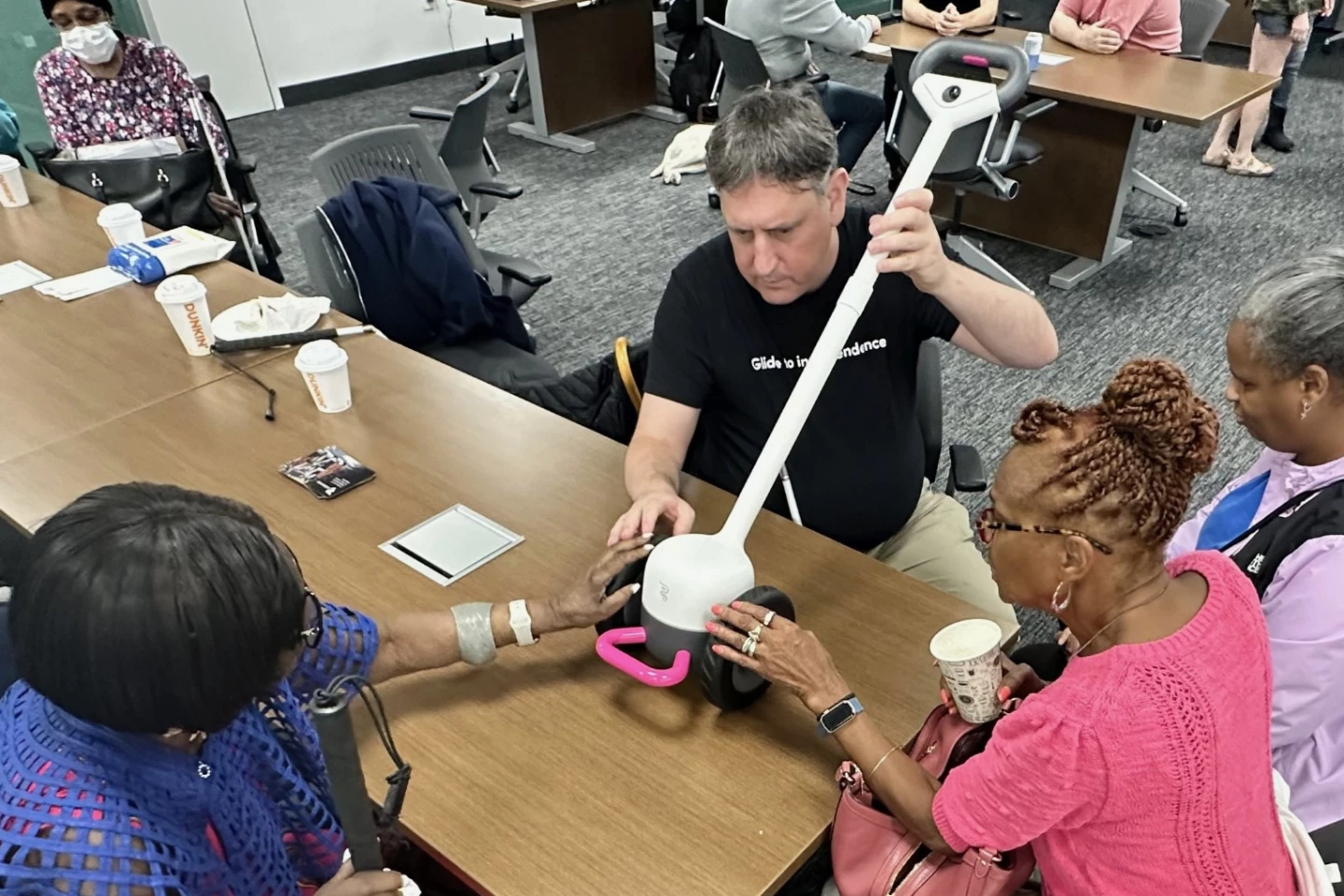There’s no doubt that a standard white cane can be quite helpful, but it isn’t all that … interactive. The Glide device certainly appears to be, however, as it verbally and physically guides blind users down city streets.
Currently being developed by Seattle startup Glidance, Glide looks a little bit like a fat, wheeled white cane. It has two rubber-tired 7.5-inch wheels and a front bumper at the bottom, an adjustable-length telescopic shaft in the middle, and an ergonomic handle at the top.
Amongst other electronic components, it incorporates a stereoscopic depth camera with a 50-ft (15-m) range; near-range sensors for obstacle and drop-off detection; a built-in speaker and microphone; plus a haptic feedback unit and button controls in the handle. It can be utilized in both Directed and Freestyle navigation modes.
Glidance
In Directed, it supplies turn-by-turn verbal directions via a platform such as Google Maps, or via a preprogrammed map that the user initially trains it to follow by taking it on a walk-through of a given route. In Freestyle, it simply keeps the user safe and walking straight as they independently make their own way down the street.
Freestyle is the main mode that’s being developed for now.
The wheels are ordinarily free to spin, so the user can set their own walking speed. When the user needs to be steered to the left or right, however, the wheels turn to the respective side accordingly. The wheels also brake when the user needs to come to a stop. Glide additionally provides verbal and haptic alerts of upcoming turns and stops, and warns of both ground-level and overhead obstacles.

Glidance
Importantly, the camera and computer vision system is also capable of identifying things like doors, crosswalks, elevators and staircases. Upon reaching obstacles like stairs, users simply pick Glide up and carry it. The device is claimed to weigh about 8 lb (3.5 kg). A single charge of its battery should reportedly be good for over six hours of use.
Glidance tells us it is presently conducting beta testing around Seattle, and that it plans on beginning a controlled rollout to preorder customers next spring (Northern Hemisphere). Glide should ultimately sell for US$1,499, along with a $30 monthly fee to cover software upgrades and the proprietary wayfinding AI software.
Some of its basic functions are outlined in the following video.
Glide Demonstration Video – Use Case & Scenario Walk Through #1
Source: Glidance


